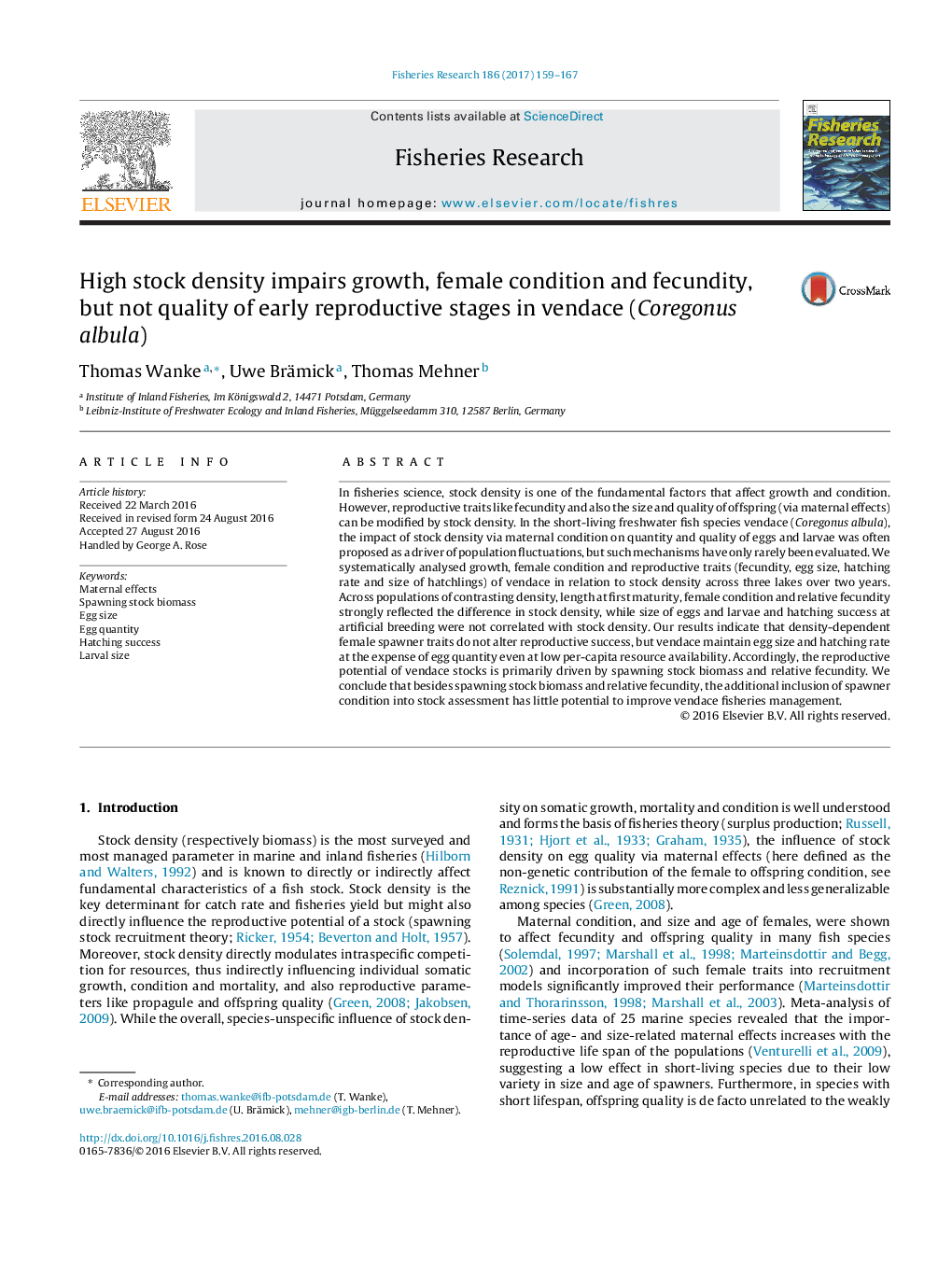| کد مقاله | کد نشریه | سال انتشار | مقاله انگلیسی | نسخه تمام متن |
|---|---|---|---|---|
| 4542611 | 1413079 | 2017 | 9 صفحه PDF | دانلود رایگان |
• Stock density negatively affected growth, condition and relative fecundity of female vendace.
• No effect of stock density on egg size, hatching success and larval size.
• Potential larvae production of a lake is primarily driven by spawning stock biomass and relative fecundity.
• Additional incorporation of condition of spawners into stock assessment does not improve vendace stock management.
In fisheries science, stock density is one of the fundamental factors that affect growth and condition. However, reproductive traits like fecundity and also the size and quality of offspring (via maternal effects) can be modified by stock density. In the short-living freshwater fish species vendace (Coregonus albula), the impact of stock density via maternal condition on quantity and quality of eggs and larvae was often proposed as a driver of population fluctuations, but such mechanisms have only rarely been evaluated. We systematically analysed growth, female condition and reproductive traits (fecundity, egg size, hatching rate and size of hatchlings) of vendace in relation to stock density across three lakes over two years. Across populations of contrasting density, length at first maturity, female condition and relative fecundity strongly reflected the difference in stock density, while size of eggs and larvae and hatching success at artificial breeding were not correlated with stock density. Our results indicate that density-dependent female spawner traits do not alter reproductive success, but vendace maintain egg size and hatching rate at the expense of egg quantity even at low per-capita resource availability. Accordingly, the reproductive potential of vendace stocks is primarily driven by spawning stock biomass and relative fecundity. We conclude that besides spawning stock biomass and relative fecundity, the additional inclusion of spawner condition into stock assessment has little potential to improve vendace fisheries management.
Journal: Fisheries Research - Volume 186, Part 1, February 2017, Pages 159–167
